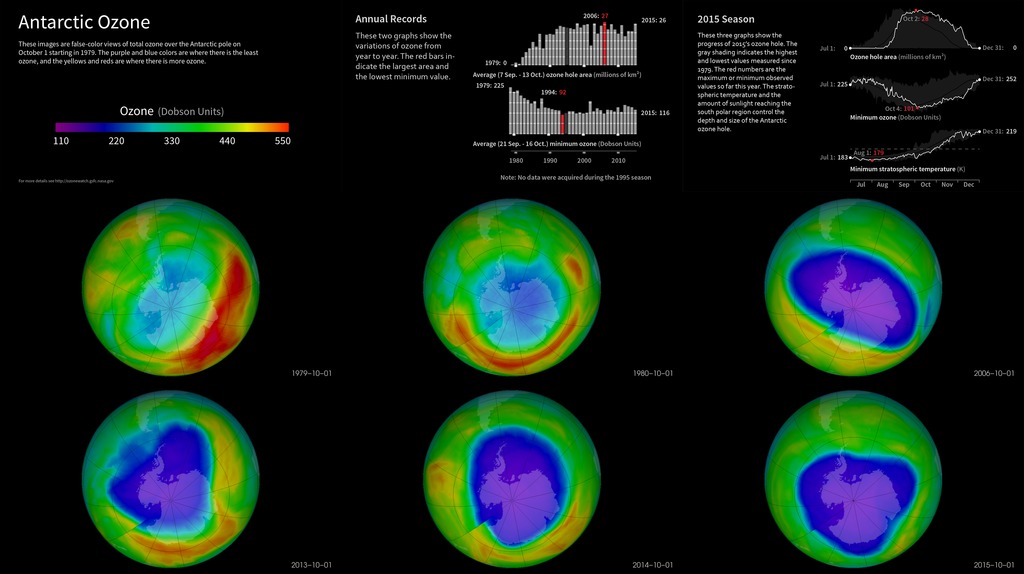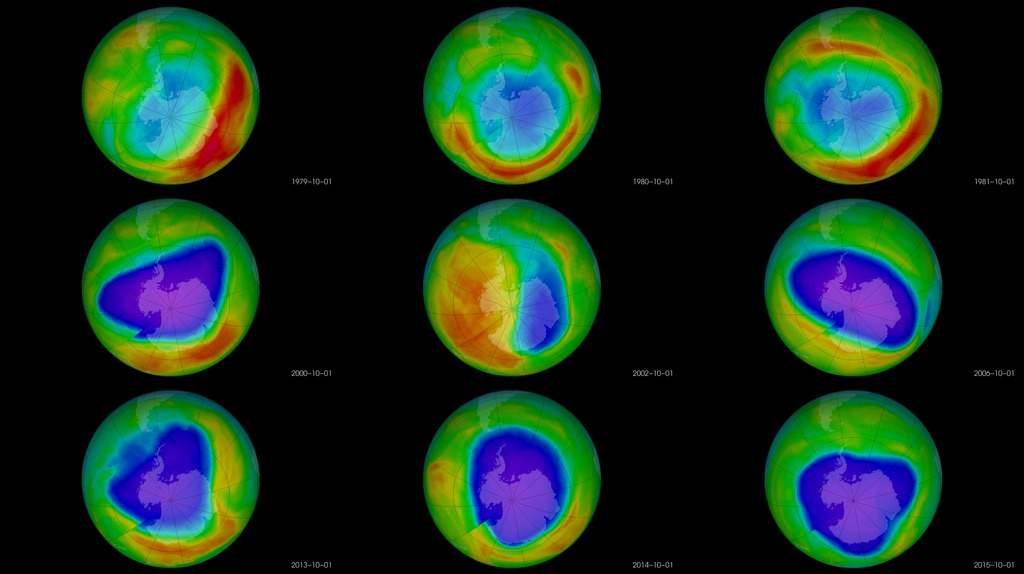ID: 30731
Ozonewatch 2015
December 10, 2015

The area of the ozone hole is determined from a map of total column ozone. It is calculated from the area on the Earth that is enclosed by a line with a constant value of 220 Dobson Units (a unit of measure for total ozone.) The value of 220 Dobson Units is chosen since total ozone values of less than 220 Dobson Units were not found in the historic observations over Antarctica prior to 1979. Also, from direct measurements over Antarctica, a column ozone level of less than 220 Dobson Units is a result of the ozone loss from chlorine and bromine compounds.
This Hyperwall series shows the recent status of the ozone layer over the Antarctic, with a focus on the ozone hole. Satellite instruments monitor the ozone layer, and OzoneWatch uses their data to create the images that depict the amount of ozone.


No comments:
Post a Comment